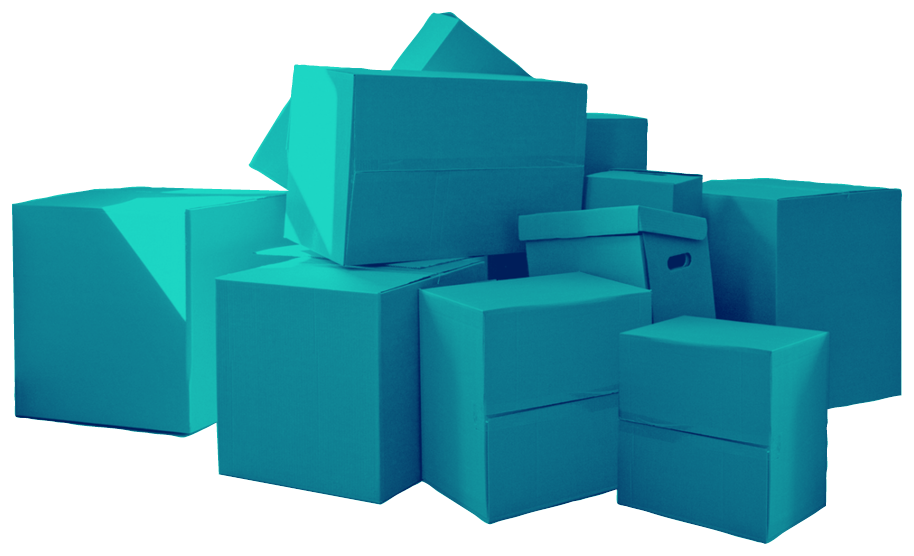
8 Future-Proof B2B Website Upgrades to Increase Pipeline & Revenue
It may be time to renovate your B2B website. Here’s how.
Most B2B websites are like McMansions: bloated, inefficient, require massive upkeep, and no longer compatible with the way people behave. A mainstay of the early aughts, McMansions saw a rapid decline in popularity over the following decade — as if everyone had simultaneously decided having two kitchen islands was both a waste and a hassle.
The typical B2B website is similarly posed to fall from grace. In the early days of the Internet, most functioned as digital brochures. As buyers’ appetites for information grew, marketers raced to churn out as much content as possible. However, there was little thought into effectively organizing or optimizing that content to deliver a seamless customer experience, let alone collecting enough data to ensure the right people saw the right content at the right time. That might have been fine 10 years ago, when buyers didn’t realize things could be different. But in the era of Netflix, Spotify, and Amazon, seamless and self-directed content experiences aren’t just a perk, but a baseline expectation buyers bring with them into every new purchase decision.
The good news is, B2B websites are the largest untapped opportunity for marketers to improve customer experience and increase pipeline and revenue. And unlike McMansions, you don’t need to tear everything down and start again from scratch. Here are 8 future-proof website upgrades, ranging from smaller improvements you can implement immediately, to bigger projects akin to a full-blown renovation.
If you have 1 week…
Ungate more content

Most B2B marketers continue to gate their most valuable content assets, hoping to capture leads. This immediately adds friction to the buyer’s journey. For one, website visitors need to stop what they’re doing in order to fill out a form. Imagine if Netflix asked you to complete a survey while you were in the middle of watching something? Disrupting visitors who are trying to self-educate negatively impacts the “binge-ability” of your content and effectively slows down the buyer’s journey. In some cases, it might bring it to a grinding halt, especially if visitors aren’t confident your gated asset will be worth the hassle, and bounce.
Forms are also begging for poor quality leads — how many times has a Roland Schitt or Harry Potter appeared among your leads? Prospects know the drill, and that trading their real name and email in exchange for content is an open invitation to be hounded by sales reps. If their contact information is accurate, that still doesn’t mean they’re a qualified lead. Matt Heinz, President and Founder of Heinz Marketing, discussed what happens when someone downloads a whitepaper and is then is contacted by a sales rep, asking if they’d like to book a demo. “The answer is almost always no. The prospect downloaded the whitepaper… from their perspective, transaction over.”
So how are you supposed to generate leads without forms? You don’t need to ditch them entirely, but marketers can adopt a more customer-centric form strategy to achieve the best of both worlds. One way is replacing a universal hard gate across your high value assets with engagement-based forms. That way, your prospects are only prompted to fill out a form after engaging with a particular piece of content for a predetermined amount of time. This gives them the chance to preview your content and make sure it’s relevant, before filling out a form. This also benefits your sales team by weeding out prospects who aren’t actually interested.
“You’ve already seen it in your own behavior. When was the last time you filled out a gating form with your professional contact information to get access to content, answered an unsolicited email, or answered your phone… if you didn’t recognize the number?”
—Stephen Casey, Principal Analyst, Forrester
Another option are soft-gated, “dismissable” forms, which gives the prospect more control and lets them self-educate through the funnel at their own pace. This also helps ensure that when you do receive someone’s contact information, they’re actually ready to talk to you.
Cut down on the clicks
Combing a massive website for relevant information is about as appealing to buyers as tracking down a set of keys in a 10,000 square foot McMansion. According to SalesForce, 56% of B2B customer now expect to find whatever they’re looking for from a company website in three clicks or less — just like their B2C counterparts. Avoid sending visitors on a wild goose chase across a flurry of blog posts, emails and landing pages to access the content they’re looking for. Instead, reduce the friction by opting for simple, direct paths. Prospects aren’t willing to do the heavy lifting anymore, and will bounce the second they get lost or frustrated.
If you have 1 month…
Group content by theme instead of chronologically

Most B2B websites display their blog posts or resource center updates in reverse-chronological order. This might make sense from a website maintenance perspective, but stop and think how a similar setup might look offline, in the real world. Imagine walking into a grocery store and finding 50,000 items arranged by date and time they were unpacked, rather than by product category. Or being greeted at the library by tens of thousands of books, all sorted by publication date, rather than by topic.
Buyers feel that same sense of dread when they see a chronological blog they have to navigate. Travis Wingate, VP of Growth Marketing at Fiix, said: “At the end of the day, if you have great content, but you have no mechanism for getting it out there in a way that’s logical, or a way that supports the unique experience, then it really becomes a moot point.”
Instead, group your content by topic, persona, or product to make it easier to find and consume. Buyers are doing their due diligence and becoming more discerning; frankly, they have zero interest spending that time navigating a chaotic resource hub. Your prospects don’t care when your content was published, so long as the information isn’t outdated. They care about what questions your content will answer, or which problems it will help them solve.
Use AI-powered content intelligence to connect related assets for your visitors
Most B2B websites categorize their content in broader strokes. What typically winds up happening is that thousands of assets are jumbled together under a handful of primary “category” or “topic” tags. This isn’t much use to your prospects, who are searching for incredibly specific information to help them make a complex purchase decision.
One of the most powerful remedies for clunky, outdated content engines is content intelligence, which uses AI to convert content assets into structured data. Because content intelligence has machine learning and Natural Language Processing (NLP) capabilities, it can automatically identify unique content attributes and generate rich metadata — “data about data” — about every single asset in your library. We’re not just talking basic identifiers like topic or asset type, but sub-topics, word count, readability score, number of instances in a nurture, even sentiment and tone — and that’s just the tip of the iceberg. It also enables your content engine to contextualize different assets and understand how they’re related.
What this means for your visitors is that as soon as they’ve finished reading a particular piece of content, your website can automatically determine which other assets are most relevant and deliver them on a silver platter. This helps keep visitors on your site for longer. Case in point: Pragmatic Institute had spent two decades creating thousands of in-depth articles, webinars, podcasts, and tools, but it was too hard for visitors to navigate. When their marketing team integrated PathFactory’s proprietary content intelligence, it suddenly became a lot easier for visitors to dive deeper through the site (and subsequently the sales funnel). Pragmatic saw 3X website engagement and 2.8X more views per session within 6 months.
Serve the next best asset in session with personalized content recommendations
Content intelligence, and AI in general, is driving a radical transformation in customer experience, and B2B customer experience is no different. Content intelligence enables websites to respond to its visitors’ evolving informational needs in real-time and deliver personalized content recommendations accordingly.
How?
Content intelligence collects deep content engagement data at every touchpoint, including exact view time, return rate, bounce rate, form submission rate, and viewing order of multiple assets. Because content intelligence also generates exhaustive metadata about every piece of content in your library, it’s able to combine all this intel to predict which assets are more likely to trigger future engagement, based on current and prior content consumption behavior.

If you have 1 quarter…
Start measuring content performance with actual engagement data instead of page views
The biggest barrier to entry around data analysis for B2B marketers is the data itself. Standard martech stacks typically provide a high-level overview of content performance, using binary metrics like number of visitors, time on page, or form fills. Few are equipped to collect the deeper data marketers need to understand how different asset combinations influence buyers across increasingly complex and non-linear content journeys.
There’s no reason for your data to be as shaky as a house made out of foam. Instead, tap content engagement data to uncover how prospects are actually interacting with different assets on their path to purchase, at an individual, account, and industry level. This insight becomes especially powerful when merged with CRM data, making it possible to reverse engineer the specific content journeys behind every closed-won opportunity. Marketers can then effectively determine ROI of individual assets, as well as identify common denominators, like:
- Were any assets viewed in the same sequence across multiple journeys?
- Were any assets viewed more than once by multiple accounts?
- Looking at all the assets consumed across the last 3 closed-won opportunities, which had the longest viewing time? What was the topic of this asset, and how often is it covered in the content library?
Once you’re able to answer these types of questions, you can identify heavy hitters in your library and adapt your content strategy based on meaningful data, rather than surface-level metrics like number of page views.
Ditch demographic segmentation for topic of interest profiles
Effective B2B content marketing boils down to delivering the right content, to the right people, at the right time, but at the same time, prospects expect hyper-relevant, personalized content. Marketers have responded to these demands with broad, rules-based segmentation, like account, industry or job title. This inevitably leads to static content experiences built around what marketers think prospects should care about, rather than enabling them to self-direct their own journey based on particular interests or evolving informational needs.
“You’re not targeting a single persona anymore. We need to get more intelligent about how we deliver content experiences to different roles within these buying groups if we want to be effective.”
—Christine Polewarczyk, SVP Product Marketing and Research, PathFactory
It’s time to start thinking about your website visitors beyond general identifiers. Content intelligence measures engagement and consumption behavior every time someone interacts with one of your assets, and this can be cross-referenced with granular metadata to build rich topic of interest profiles that more accurately reflect who your prospects are and what they’re looking for.
If you have 1 year…
Streamline and centralize your content engine
Did you know that inconsistent or contradictory information can decrease the likelihood of a significant purchase by almost 160%? Buyers expect a seamless content experience, yet too many B2B marketers still rely on disjointed tools, spreadsheets and manual tagging to keep everything sorted. The problem with a cumbersome content engine — aside from the logistical headaches — is it doesn’t have the ability to contextualize the assets in your library, then tie everything together.
It also inevitably leads to disjointed taxonomy, exacerbating content waste, siloes and confusion across organizations. Instead, Christine Polewarczyk, VP Research Director at Forrester, recommends implementing a universal taxonomy to keep everyone on the same page. You can implement in stages by conducting a content audit to identify gaps and get rid of any clutter. Then, identify which 10-20 attributes are most important to measure and analyze, and assign your tags accordingly.
Let’s get moving
Static and oversized B2B websites belong in the past, right alongside their real estate counterparts. Depending on your content engine, adapting to new buyer behaviors and expectations for relevant, self-directed content journeys might entail just a few tweaks. It also might require a complete overhaul. The good news is, you don’t have to go it alone because we’re here to help.
